 American Cuisine American Cuisine The cuisine of the original European pioneers still largely survives in American cuisine, which has integrated cooking techniques and dishes from native Indian, Mexican, Jewish, Italian, African, Irish, German, French, Scandinavian, and Chinese communities. In spite of the variety and abundance of products from so many different countries, truly American cuisine is anchored to a few basic ingredients that provide a wide variety of very popular dishes. Corn is a prime example of this; it may be prepared in numerous ways and is one of the staples that forged this great land, as well as tomatoes, beans, potatoes, beef, and seafood.  The two main cooking utensils of the American pioneer were the cooking pot and skillet, reflecting the fact that many American dishes can be stewed or fried. Such past times as the barbecue, in which shellfish, fish, and such meats as ribs, hamburgers, and steaks are grilled in the open air and planked meat or fish (prepared in an oven on an oak or hickory plank, which acts as a serving tray) reflect the American taste for rustic cuisine. The two main cooking utensils of the American pioneer were the cooking pot and skillet, reflecting the fact that many American dishes can be stewed or fried. Such past times as the barbecue, in which shellfish, fish, and such meats as ribs, hamburgers, and steaks are grilled in the open air and planked meat or fish (prepared in an oven on an oak or hickory plank, which acts as a serving tray) reflect the American taste for rustic cuisine. The trends of contemporary cuisine are reflected in the characteristic types of dishes, salads and dips. As a generalization, most salads are based on the Caesar salad concept were thick dressings are usually tossed with firm lettuces. A variety of dips, or thick sauces, are served with raw foods, toast, sandwiches, and accompanying hors d’oeuvres or cocktail snacks. 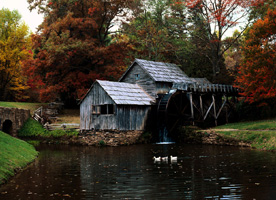 In today’s fast paced American home, despite the wide use of readily prepared, canned, or frozen foods, there is one field in particular where the homemade tradition remains very much alive, in the baking of breads, cakes, and pastries. Resurgence in the advancing and individualizing of American cuisine has never been more predominate than in the last 20 years. With a heightened sense of culinary awareness by amateurs and professionals alike, they have begun a crusade of sorts to carve out Americas place in the culinary world. In today’s fast paced American home, despite the wide use of readily prepared, canned, or frozen foods, there is one field in particular where the homemade tradition remains very much alive, in the baking of breads, cakes, and pastries. Resurgence in the advancing and individualizing of American cuisine has never been more predominate than in the last 20 years. With a heightened sense of culinary awareness by amateurs and professionals alike, they have begun a crusade of sorts to carve out Americas place in the culinary world.
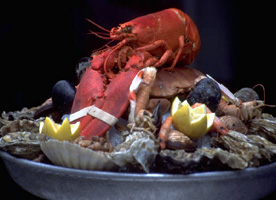 Regional Cuisine Regional Cuisine The Anglo Saxon regions of North America are reflected in New England areas with preparations of stews, pies, and roasts. The region is also noted for its seafood, especially clams, lobster, and codfish. In Wisconsin and Pennsylvania, The German influences are predominant with sweet and sour dishes and marinated meats, this region also specializes in dairy products. 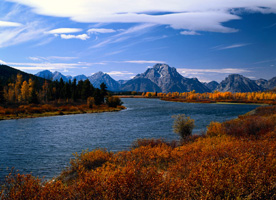 The Scandinavian influence is strong in Minnesota and North Dakota, where one finds smorgasbord, herrings, and Danish pastry. Dutch influence is noticeable in Michigan with its stews and waffles, while in Oklahoma, Indian cooking still survives. In the Midwest, products from the lakes and rivers are widely used, an abundance of lake trout, pike, and grains grown around the fertile land surrounding the water. The Scandinavian influence is strong in Minnesota and North Dakota, where one finds smorgasbord, herrings, and Danish pastry. Dutch influence is noticeable in Michigan with its stews and waffles, while in Oklahoma, Indian cooking still survives. In the Midwest, products from the lakes and rivers are widely used, an abundance of lake trout, pike, and grains grown around the fertile land surrounding the water. The South is particularly affected by the French presence in Louisiana, and African traditions as a whole. In Florida, turtles, crabs, and shrimp are used in cooking, while Virginia is well known for its ham and chicken dishes.  The southwest is dominated by Spanish and Mexican influences, while on the west coast of California; seafood predominates as well as fruit, which is abundantly grown. Oregon and Washington State are well known for game, salmon, and crawfish. The southwest is dominated by Spanish and Mexican influences, while on the west coast of California; seafood predominates as well as fruit, which is abundantly grown. Oregon and Washington State are well known for game, salmon, and crawfish.
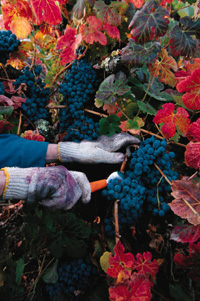 American Wines American Wines The United States produces 85 percent of the wine it consumes, 80 percent of which comes from California. Although Americans used to drink more spirits than wine, the proportion is changing, and the production of California wines, after a few setbacks due mainly to prohibition and phylloxera, is now expanding rapidly. Vine growing was introduced to Mexico by Cortez in the early sixteen century, and slowly spread to the north by Spanish missions. It was not until the second half of the nineteenth century, when California’s cease to be Mexican and became one of the state’s of the union, that modern vine growing really began. The credit for this goes to a few pioneers, including the great Hungarian nobleman, Agoston Haraszthy, considered by many to be the father of Californian vine growing. They imported a large number of European vines to replace that of the "mission" (a variety of grape formally introduced by the Jesuits, which would have very high yield but produced only mediocre wines). After developments involving trial and error, the European vines finally became adopted to growth in the various soils and climates of California. Two major vine growing areas can be distinguished: the relatively cold north coast, which produces table wines, some of which are the finest in the world, and in the much warmer, inland valleys, producing mainly sweet wines and dessert wines, which are high in alcohol, but, in general, of rather indifferent quality. 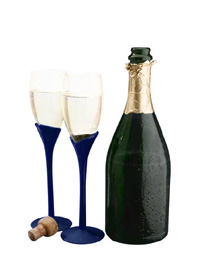 The California vineyard is outstandingly well equipped and planned. They produce, in general, three main types of wine. The inexpensive red, white, and rosé, are often from table grapes. Some of the better quality wines carry European names, often those of classic grape varieties, but the use of classic regional names is declining and it must be said that such wines bear scant relation to their French counterparts. The California vineyard is outstandingly well equipped and planned. They produce, in general, three main types of wine. The inexpensive red, white, and rosé, are often from table grapes. Some of the better quality wines carry European names, often those of classic grape varieties, but the use of classic regional names is declining and it must be said that such wines bear scant relation to their French counterparts. The varietal wines bear the name of the grape or grapes from which they are made, although regulations do not yet insist on 100 % use of these varieties, which is something often stressed on labels by top producers. Such wines can equal many fine European wines. The sparkling wines, made by the champagne process, can also be very good, notably the dry versions. View some of our American Recipes |
|



